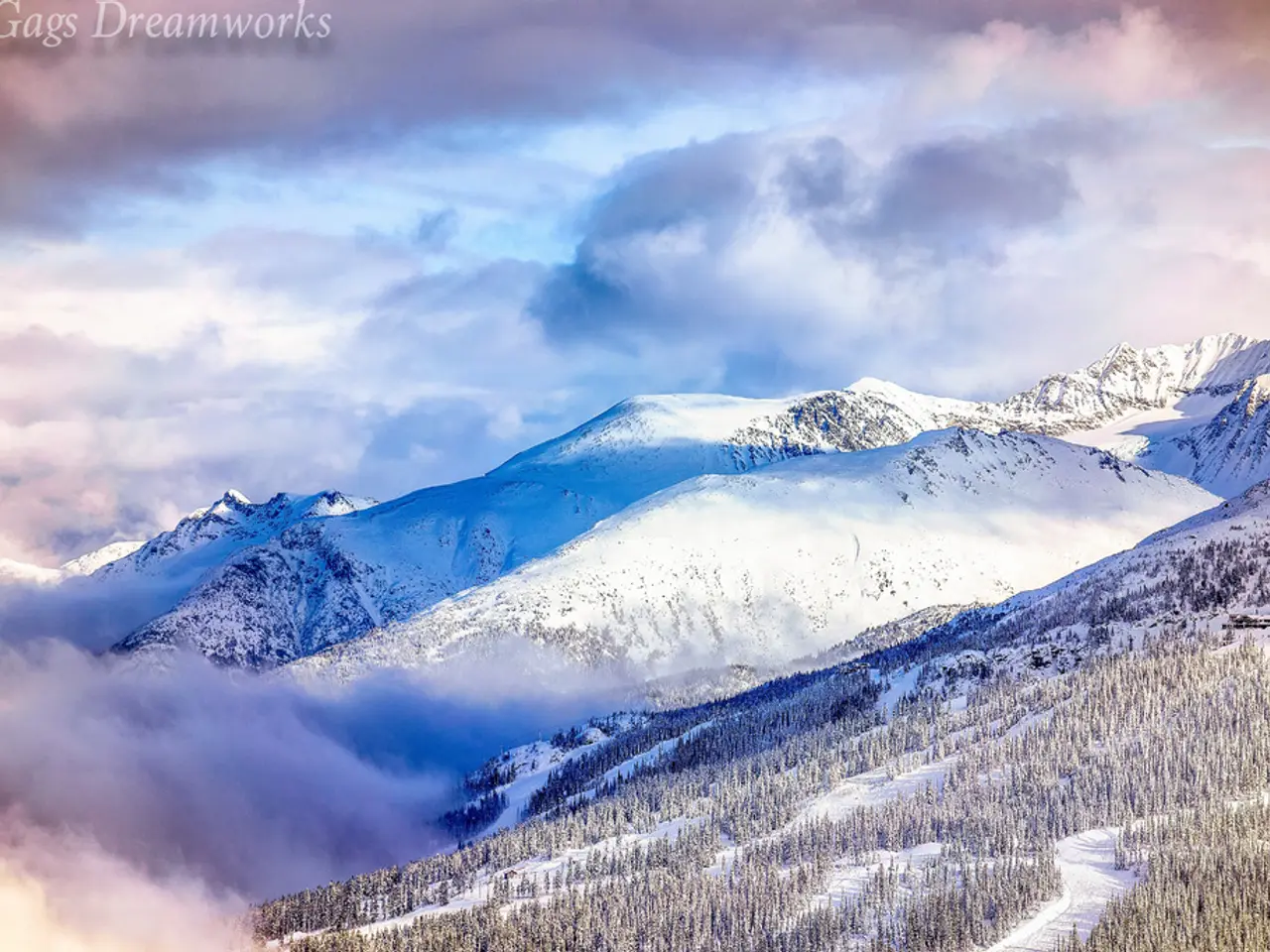Pioneers such as John Ball and Julius Payer, who once documented the Trentino glaciers, would find them unrecognizable today.
In the heart of Italy's Alps, the province of Trentino has seen a significant transformation in its glacial landscape. The book "Ghiacciai del Trentino," penned for Cierre Edizioni, serves as a comprehensive treatise on this topic, delving into the history, science, and current state of the region's glaciers.
The book discusses various aspects of glaciers, from permafrost and rock-glaciers to hypogeal glaciers hidden in the karst cavities of the area. It explores the relationship between glaciers and climate change, tracing the glaciers' history from the great glaciations to the present-day effects of global warming.
One of the most striking findings in "Ghiacciai del Trentino" is the extensive retreat of Trentino's glaciers. Since the mid-19th century, the glaciated territory has shrunk by 72%, with many historically present glaciers now extinct. The Mandrone Glacier, Italy's largest, is not immune to this trend, and the Careser Glacier in the Cevedale group shows a total thickness loss of over 70 meters since 1967.
Perhaps the most symbolic of Trentino's glacial crisis is the Marmolada, the highest peak in the Dolomites. This glacier has lost about 1,200 meters in length since measurements began in 1888 and is currently in an "irreversible coma." Experts predict that it could disappear entirely by 2040 if current trends continue.
The book also delves into the broader context of high-altitude environments, discussing the relationships between glaciers, plants, and animals in protected areas like Stelvio, Adamello-Brenta, and Paneveggio-Pale di San Martino.
Beyond the scientific content, "Ghiacciai del Trentino" boasts attractive graphics and an excellent photographic apparatus, making it not only informative but also visually engaging. The book also pays tribute to explorers and scientists who have ventured into Trentino's glaciers, such as Cesare Battisti, Ettore and Bruno Castiglioni, Olinto Marinelli, and Ardito Desio.
The consequences of Trentino's glacial retreat extend beyond the loss of these natural wonders. Increased hazards for mountain tourism due to rockfalls and landslides necessitate trail closures and evacuations. Authorities emphasize caution and preparedness for mountain excursions due to the perilous terrain and the increase in accidents and fatalities in the region.
"Ghiacciai del Trentino" stands as a testament to the region's glacial history and a warning of the challenges ahead. It is a real encyclopedia on the glaciers of Trentino and will remain in libraries as one of the richest and most complete treatises ever published on the glaciers of a region at least on the Italian side of the Alps.
[References] [1] "Trentino glaciers are melting at an alarming rate." Trentino TV. (2021). https://www.trentinotv.it/news/trentino/2021/06/15/trentino-glaciers-are-melting-at-an-alarming-rate/ [2] "Marmolada glacier on the brink of disappearing." The Guardian. (2021). https://www.theguardian.com/environment/2021/apr/11/marmolada-glacier-on-the-brink-of-disappearing [3] "Rockfalls and landslides in the Brenta Dolomites." Italian Alpine Club. (2021). https://www.caivano.it/rockfalls-and-landslides-in-the-brenta-dolomites/ [4] "Safety precautions for mountain excursions in Trentino." Trentino Alto Adige Tourism. (2021). https://www.trentino.it/en/safety-precautions-for-mountain-excursions-in-trentino
- The comprehensive book "Ghiacciai del Trentino" delves into the connection between Trentino's glaciers and climate change, a significant aspect of international science that discusses the effects of global warming on the environment.
- In addition to the scientific exploration of glaciers, the book highlights the importance of health-and-wellness and fitness-and-exercise in protected areas like Stelvio, Adamello-Brenta, and Paneveggio-Pale di San Martino, emphasizing the interplay between environmental science and human activities.
- The book underscores the critical impact of climate change on Trentino's glaciers, also touching upon the broader environmental-science aspects of how glaciers affect plants, animals, and tourism in the region, thus calling attention to the need for concerted efforts to address climate change on an international scale.




